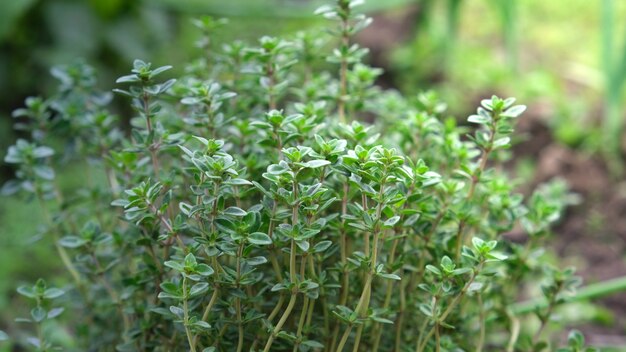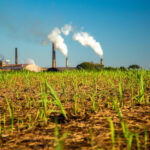Thyme (Thymus vulgaris) is a versatile and hardy herb, perfect for South Africa’s diverse climate. With its uses in culinary, medicinal, and ornamental applications, thyme farming can be a profitable choice for South African farmers. Here’s a comprehensive guide to growing thyme from seed to harvest, covering the stages, inputs, required machinery, and best practices for pest and disease management.
1. Land Preparation
- Soil Type: Thyme prefers well-drained, slightly alkaline to neutral soils (pH 6.0-8.0). Sandy loam soils rich in organic matter are ideal. In areas with heavy clay soil, amend the ground with sand or organic compost to improve drainage.
- Site Selection: Choose a sunny location as thyme thrives in full sun. Avoid low-lying areas prone to waterlogging, as thyme is susceptible to root rot.
- Preparation: Clear the land of weeds, rocks, and debris. Light tilling or harrowing helps aerate the soil. Prepare raised beds if possible, which aid in drainage, especially in regions with heavier rainfall.
2. Planting Thyme from Seeds
- Seed Preparation: Thyme seeds are small, so consider mixing them with fine sand for even distribution. Seeds require 7-10 days to germinate, but it can take 2-3 weeks in cooler conditions. Start seeds indoors for optimal germination or directly sow them in warmer months.
- Sowing: Sow seeds approximately 0.5 cm deep, spacing them about 20 cm apart in rows that are 30 cm apart. For larger operations, mechanical seeders can help ensure even seed distribution.
- Timing: The best time to sow is in spring after the last frost, though thyme can tolerate light frost once established. Aim to plant when temperatures are between 15°C and 25°C.
3. Watering and Irrigation
- Water Requirements: Thyme is drought-tolerant, requiring 1-2 cm of water per week. Water sparingly during the establishment phase to encourage deep root growth, as thyme prefers slightly dry soil.
- Frequency: Irrigate once a week in dry seasons. Drip irrigation is recommended as it minimizes water waste and reduces the risk of fungal infections by keeping foliage dry.
4. Fertilization
- Soil Amendments: Before planting, enrich the soil with well-decomposed compost or manure. Aim for nitrogen-rich compost but avoid excessive nitrogen, which can reduce thyme’s aromatic compounds.
- Fertilizer Application: Use a balanced fertilizer like N-P-K 10-10-10 sparingly, applying only once in early spring to promote growth without compromising thyme’s essential oil content. Excessive fertilization, especially nitrogen, can make plants more susceptible to diseases.
5. Growth Stages of Thyme
- Germination (0-3 weeks): Keep soil moist but not waterlogged. Cover seedlings if starting indoors and expose them to sunlight gradually as they grow.
- Establishment (3-8 weeks): At this stage, seedlings grow into young plants. Thin out weak plants and begin light weeding. Protect plants from strong wind using windbreaks if necessary.
- Mature Growth (8 weeks to harvest): Thyme matures in 90-120 days. Once established, it requires little maintenance, apart from occasional weeding and moderate watering. Prune the plants lightly after they reach about 15 cm to encourage bushier growth.
6. Weed, Pest, and Disease Management
- Weeding: Weed control is essential during the establishment phase. Manual weeding works well, but on large farms, a mechanical cultivator or plastic mulch can help control weeds. Mulching with organic materials like straw is also effective.
- Pests:
- Aphids: These tiny insects can sap nutrients and stunt growth. Use insecticidal soap or neem oil spray if infestations become severe.
- Spider Mites: Dry conditions can attract spider mites. Maintain proper humidity and use miticides when necessary.
- Diseases:
- Root Rot: Excess moisture can cause root rot. Prevent by ensuring proper drainage and avoid overwatering.
- Powdery Mildew: This fungal disease appears as a white powder on leaves. It can be managed by improving air circulation and using sulfur-based fungicides if needed.
- Herbicides: Avoid herbicides close to harvest to prevent residues in the crop. Pre-emergent herbicides can be applied sparingly before planting to control weeds but should be avoided during the growth phase.
7. Harvesting Thyme
- When to Harvest: Thyme is typically ready for harvest after 3-4 months when plants reach a height of 15-20 cm. Harvest just before flowering for optimal flavor and oil content.
- Harvesting Technique: Use sharp scissors or shears to cut the top 5-10 cm of growth, leaving a few leaf sets to encourage regrowth. For larger farms, mechanical harvesters can be used for quicker processing.
- Frequency: Thyme can be harvested multiple times per season, generally every 6-8 weeks, depending on growth and climate conditions.
8. Post-Harvest Processing and Storage
- Drying: Dry thyme in a well-ventilated, shaded area. You can use drying racks or hang small bunches upside down. In commercial setups, herb dryers or dehydrators offer faster, controlled drying.
- Storage: Once fully dry, store thyme in airtight containers away from sunlight and moisture. Properly dried and stored thyme can maintain its quality for up to a year.
- Packaging: For commercial purposes, package thyme in airtight, labeled bags. If selling fresh, place in cool storage immediately after harvest.
Growing thyme in South Africa offers a profitable, sustainable farming option. By following these detailed steps—from seed to harvest and storage—South African farmers can cultivate high-quality thyme. With its resilience, adaptability, and market demand, thyme can be an excellent addition to any farming portfolio. Consistent management and proper harvesting techniques will help ensure high yields, allowing farmers to maximize profitability and expand their herb production.







